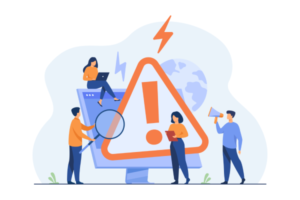Ensuring the most optimal performance of your website and shopping cart is crucial to success in the competitive and fast-paced landscape of eCommerce. Conversion Rate Optimization (CRO) provides a strategic approach to achieve this focused on increasing the percentage of website visitors who complete desired actions, such as making a purchase. At the heart of CRO is A/B testing, a method that allows businesses to experiment and analyze which changes lead to improved conversion rates. In this article, we will delve into the significance of CRO and A/B testing for eCommerce success, highlighting the importance of continuous improvement and exploring common mistakes made during A/B testing, along with strategies to avoid or mitigate them.

The Importance of Conversion Rate Optimization
Conversion Rate Optimization is a fundamental aspect of any well-rounded eCommerce strategy and it directly impacts the bottom line. By optimizing the user experience and streamlining the conversion process, businesses can achieve a higher return on investment (ROI) from their online experiences. Here are some key reasons why CRO is crucial for eCommerce success:
Enhanced User Experience
CRO focuses on improving the overall user experience, making it more intuitive, enjoyable, and efficient for visitors to navigate the website and complete desired actions. Enhancing the user experience also helps improve your bottom line. When users enjoy navigating your site and completing a desired action – such as checking out – is easy, they will be more likely to return and convert again. If your business offers subscription products, this benefit is especially important.
Increased Revenue

Marketing efforts are geared towards bringing as many users in a target audience to your website as possible within the budget you have at your disposal. With CRO included in your eCommerce strategy, you’ll likely start to see higher conversion rates. A higher conversion rate means more visitors are completing desired actions and converting into customers, leading to increased revenue without the need to spend more ad dollars in order to drive additional traffic.
Data-Driven Decision-Making
A/B testing provides invaluable insights into your target market, both in the research prior to running an experiment and in analyzing results of running a test. These insights include user behavior and preferences, and knowing more about your users empowers your business to make informed decisions based on real user data rather than assumptions.
Competitive Advantage
The eCommerce landscape is very competitive and continuous optimization is increasingly important to maintain an advantage. Including CRO in your strategy ensures that your eCommerce website stays competitive by adapting to rapidly changing market trends and customer expectations.
Now, let’s explore the common mistakes made during A/B testing and how to avoid or mitigate them:
Common CRO Mistakes
There are many potential pitfalls when it comes to running A/B tests on your website. With any experimentation effort, we must remember that without proper preparation and statistical power, the results of the test may not be what they seem. So when you are conducting tests on your site, it is vital to remember these five common mistakes and how to avoid them.
Mistake #1 – Sample Size is Too Small
One of the most prevalent errors in A/B testing is drawing conclusions from a small sample size. A small sample may not be representative of the entire user population, leading to unreliable results.
To avoid this mistake, it’s essential to ensure that the sample size is statistically significant. Use statistical power calculations to determine the required sample size based on factors such as the desired level of confidence and the expected effect size. Larger sample sizes provide more reliable results and reduce the risk of drawing incorrect conclusions.
Mistake #2 – Uneven Traffic Between Variations
While it’s impossible to ensure each version gets the exact same number of visitors in a test, uneven distribution of traffic among A/B test variations can skew the results. If one variation receives significantly more traffic than another, the analysis may be biased.
Most tools and platforms for A/B testing often have features that automatically distribute traffic evenly among your test variations. Regularly monitor the traffic distribution throughout the experiment to identify and address any imbalances promptly. It’s much harder to fix this problem – and analyze your results – after the fact. If you do encounter this issue during an experiment, it is recommended that you pause the test and attempt to diagnose the issue. For example, perhaps there is an issue with your test setup that could be causing the imbalance. You can also reach out to the support team for the testing platform to ask questions and get further assistance.
Mistake #3 – Failing to Prioritize Audience Selection

Neglecting to align your test’s segmentation with your target audience can also lead to irrelevant insights. Different audience segments may respond differently to each test variation, and a one-size-fits-all approach may not be effective. As an example, if you are testing a change to PayPal as a payment method in your checkout page, it could potentially skew results if you included traffic from a country that does not use PayPal.
Prioritize audience selection by segmenting users based on relevant criteria such as demographics, location, or user behavior – keeping your test hypothesis and what you aim to learn in mind. Analyze the performance of variations within each segment to tailor optimization strategies to specific audience needs. Customizing the user experience for different segments can lead to more impactful and targeted improvements.
Mistake #4 – Ignoring Seasonality
Most verticals experience some form of seasonality, even if it’s in the form of a yearly promotional schedule. Overlooking the influence of seasonality on user behavior can result in misguided conclusions when it comes to running A/B tests. Seasonality’s, such as holidays or industry-specific trends, can significantly impact conversion rates. Most CRO agencies and teams will recommend avoiding testing during a time when seasonality could impact traffic, conversions, or revenue.
Sometimes seasonality is unavoidable. Account for seasonality in your analysis by comparing results across different time periods. Consider creating separate experiments for distinct seasons or adjusting the significance level based on historical performance during specific times of the year. By acknowledging and adapting to seasonal trends, businesses can implement more effective and context-aware changes.
Mistake #5 – Assuming Causation When It’s Actually a Correlation
When you are preparing to run an A/B test, one of the first steps is to define your objective and what you want to learn. This practice results in your hypothesis for the test. However, it’s important to avoid assuming a causal relationship between changes and observed effects without proper evidence, as this can lead to misguided decisions. Correlation does not imply causation, and making assumptions without thorough analysis can result in ineffective optimizations.
Clearly define hypotheses before conducting A/B tests and base them on a solid understanding of user behavior and data. When analyzing test results, consider additional factors – such as external forces like the economy or industry trends – that may influence outcomes and avoid making hasty conclusions. If a correlation is observed, conduct further experiments or gather additional data to establish a causation. A disciplined and cautious approach to hypotheses generation coupled with a thorough results analysis ensures that optimizations are based on sound evidence.
Conclusion
In the dynamic world of eCommerce, the journey towards success is paved with continuous improvement. A solid Conversion Rate Optimization strategy driven by A/B testing provides businesses with the tools to refine their online presence, enhance user experiences, boost conversion rates, and ultimately grow the bottom line. By understanding and mitigating common mistakes such as small sample sizes, uneven traffic distribution, audience segmentation pitfalls, ignoring seasonality, and avoiding assumptions of causation from correlations, businesses can ensure that their optimization efforts are not only data-driven but also effective in achieving tangible and long-lasting results. Embracing a culture of experimentation and learning from A/B testing outcomes positions eCommerce websites and brands for sustained growth and long-term success in our ever-evolving digital landscape.





